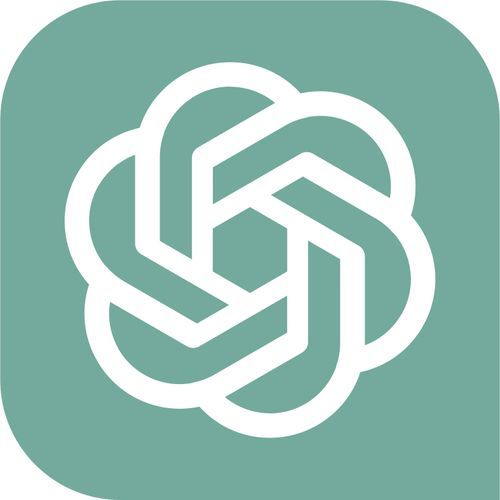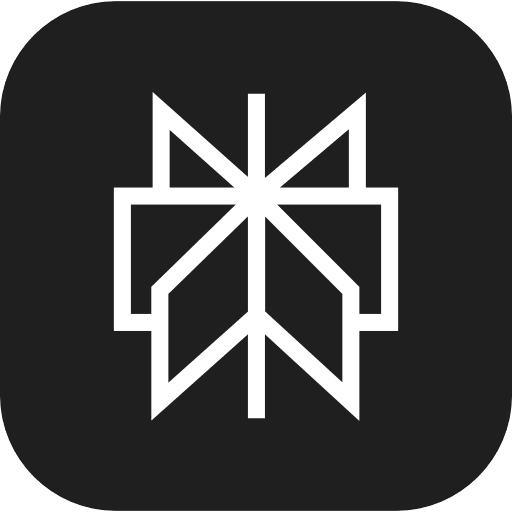Library of teambuilding games & icebreakers


Mirror game
Two people stand across from each other and mirror each other's movements, trying to stay in sync.
Mirror game
How to play Mirror game
Two people stand across from each other and mirror each other's movements, trying to stay in sync.
Gallery



Video


Cultural Traditions Race
Picture your team exploring global cultures in a hands-on way. The Cultural Traditions Race isn't your typical history lesson; it's an immersive experience. You'll cook, dance, and dive into traditions from various corners of the world. The catch? You're in it together. As you step into unfamiliar shoes and embrace new customs, you'll learn to communicate across differences, adapt on the fly, and appreciate the beauty of diversity. It's like a crash course in teamwork that leaves you with a deeper connection and a broader perspective.
Cultural Traditions Race
Picture your team exploring global cultures in a hands-on way. The Cultural Traditions Race isn't your typical history lesson; it's an immersive experience. You'll cook, dance, and dive into traditions from various corners of the world. The catch? You're in it together. As you step into unfamiliar shoes and embrace new customs, you'll learn to communicate across differences, adapt on the fly, and appreciate the beauty of diversity. It's like a crash course in teamwork that leaves you with a deeper connection and a broader perspective.
Instructions
- Form teams to represent a range of cultures.
- Dive deep into the assigned cultural traditions to truly understand them.
- Engage in activities like cooking, dancing, or crafting as indicated.
- Reflect on the experience and share insights as a team.
- Approach each tradition with respect and an open-minded spirit.
Gallery



Video


Balloon burst blitz
Time to pop some balloons in balloon burst blitz! Teams race to pop balloons filled with challenges and complete the tasks inside. Whether it’s a trivia question or a physical challenge, the goal is to be the first team to finish all tasks.It’s fast, fun, and slightly chaotic—but in the best way. Plus, the surprise of what’s inside each balloon keeps things exciting!
Balloon burst blitz
Time to pop some balloons in balloon burst blitz! Teams race to pop balloons filled with challenges and complete the tasks inside. Whether it’s a trivia question or a physical challenge, the goal is to be the first team to finish all tasks.
It’s fast, fun, and slightly chaotic—but in the best way. Plus, the surprise of what’s inside each balloon keeps things exciting!
How to play:
- Fill balloons with different challenges (trivia, physical tasks, etc.).
- Teams pop the balloons, complete the challenge inside, and move to the next.
- First team to finish all tasks wins!
Gallery



Video


Conflict resolution storytelling
This one's all about sharing stories! In this activity, we'll open up about our real-life workplace conflicts and learn a bunch of cool stuff from each other.
Conflict resolution storytelling
This one's all about sharing stories! In this activity, we'll open up about our real-life workplace conflicts and learn a bunch of cool stuff from each other.
Why it's awesome for learning conflict resolution
Real-Life Drama: So, imagine this: We're sharing the nitty-gritty details of actual conflicts we've faced at work. No made-up stuff here! That means the lessons we learn are totally relatable to our daily grind.
All Walks of Life: We've got a mixed bag of folks here, from different departments and roles. That means loads of different perspectives. Hearing stories from all angles makes the learning super rich.
Feel the Empathy: When we listen to each other's tales of workplace woe, it's like putting on someone else's shoes (not literally, though). We start to get how our colleagues feel in those tough spots.
Gallery



Video


Three-line scene
Anyone who’s played beginner improv games before may have encountered a game called “Yes, and”. In it, people work together to build an increasingly ridiculous story.
Three-line scene
How to play Three-line scene
Anyone who’s played beginner improv games before may have encountered a game called “Yes, and”. In it, people work together to build an increasingly ridiculous story. For example:
- Person 1: “I went to the gym this morning.”
- Person 2: “Yes, and your arms look fantastic.”
- Person 3: “Yes, and they’d be perfect for arm wrestling.”
- Person 1: “Yes, and I want to tattoo my partner’s name on them.”
- Person 2: “Yes, and they’ll probably want to marry you after.”
Three-Line Scene takes that concept and simplifies it. This time, pairs of colleagues work together to say one line each, using “yes, and” to build on whatever the previous person said. Heads up, it works best when you say statements vs questions. For example:
- Person 1: “I went to the gym this morning.”
- Person 2: “Yes, and you’re making me feel guilty about eating this cake.”
- Person 1: “Yes, and I’m not going to stop until you become my gym partner.”
The aim is to move fast, think quickly, and not worry about saying the ‘right thing’. The game works well because it rewards creativity and is inherently positive. Those enthusiastic “yes, and” responses embolden new improvisers and make them feel comfortable thinking on their feet and contributing to the task.
We don’t have to explain how helpful that is to team collaboration! The fact teammates practice the art of agreeing with their colleagues (vs dismissing their suggestions) is useful too. With any luck, it’ll transfer into everyday conversations.
Gallery



Video


Snack tastings
If you don’t want so much focus on alcoholic drinks, try sticking with snacks. Who doesn’t love snacking? A snack pairing can be a really good idea if you have a culturally diverse staff. Have everyone bring or suggest one of their favorite snacks and the drink that is best served with it. This can range from a fancy hors d'oeuvre to a decadent dessert. Or, simply have everyone research a geographic area and bring in the region’s most popular snack for everyone to try. This is an easy DIY event that you can host without needing a particular space, though you may need room to set everything up.
Snack tastings
How to host Snack tastings
If you don’t want so much focus on alcoholic drinks, try sticking with snacks. Who doesn’t love snacking? A snack pairing can be a really good idea if you have a culturally diverse staff. Have everyone bring or suggest one of their favorite snacks and the drink that is best served with it. This can range from a fancy hors d'oeuvre to a decadent dessert. Or, simply have everyone research a geographic area and bring in the region’s most popular snack for everyone to try. This is an easy DIY event that you can host without needing a particular space, though you may need room to set everything up.
Gallery



Video


Giant Connect Four
Giant Connect Four is a strategic and engaging game that promotes critical thinking, decision-making, and friendly competition. It encourages problem-solving skills and provides an opportunity for participants to interact and strategize with each other in a relaxed setting.
Giant Connect Four
How to play Giant Connect Four
Instructions: Set up a giant Connect Four board on a stand. Participants take turns dropping their colored discs into the slots, aiming to get four in a row horizontally, vertically, or diagonally. The player who achieves four in a row first wins.
Materials needed: Giant Connect Four board.
Giant Connect Four is a strategic and engaging game that promotes critical thinking, decision-making, and friendly competition. It encourages problem-solving skills and provides an opportunity for participants to interact and strategize with each other in a relaxed setting.
Gallery



Video


3-Question Mingle
3-Question Mingle bypasses the small talk and cuts straight to the nitty-gritty. It’s a simple game that helps employees get to know each other in a short space of time.
3-Question Mingle
3-Question Mingle bypasses the small talk and cuts straight to the nitty-gritty. It’s a simple game that helps employees get to know each other in a short space of time.
Great for: Interpersonal bonding
Duration: 10 minutes
Players: 8+
You’ll need: Pens, sticky notes
How to play 3-Question Mingle
Setup: Hand each player a pen and a sticky note and ask them to write down three open-ended questions. Examples include questions like “Who’s the most important person in your life right now?” Or “If you could have more money or more time, which would you choose and why?”
To play: Set a time limit and ask the players to start mingling with their colleagues. Once the players find a partner, they take turns asking one of their questions. Once they’ve both asked a question, they swap those questions with each other and find a new partner. This process continues until the time runs out. To debrief, ask your group what interesting things they learned about one another.
Gallery



Video


Departmental meet and greets
Do you have different departments that tend to work in silos? In this case it can be a smart idea to organize happy hours where everyone can meet and mingle. You can go as far as assigning tables with mixed groups, or just encourage people to network more organically. A cross-departmental meet and greet is a simple and intuitive way to chat and get to know each other.
Departmental meet and greets
How to host Departmental meet and greets
Do you have different departments that tend to work in silos? In this case it can be a smart idea to organize happy hours where everyone can meet and mingle. You can go as far as assigning tables with mixed groups, or just encourage people to network more organically. A cross-departmental meet and greet is a simple and intuitive way to chat and get to know each other.
Gallery



Video


The Leadership Jigsaw Puzzle
This game is no ordinary puzzle-solving extravaganza. It challenges teams to collaborate, communicate, and showcase their leadership prowess. By assigning team leaders, setting time limits, and emphasizing effective problem-solving, this game hones their ability to guide and bring out the best in your team. So grab your puzzle pieces and get ready to unlock your team’s inner leadership maestro in a fun and engaging way.
The Leadership Jigsaw Puzzle
Instructions:
- Divide participants into teams of 4-6 with puzzles and workspace.
- Teams solve the puzzle within a specified time, demonstrating leadership skills.
- Assign the role of ‘team leader’ and allow them to oversee progress.
- Set a time limit for completion, emphasizing collaboration and effective communication.
- Debrief and discuss team approaches, leadership qualities, challenges, and strategies.
- Reflect on individual and collective leadership skills, share insights and lessons.
This game is no ordinary puzzle-solving extravaganza. It challenges teams to collaborate, communicate, and showcase their leadership prowess. By assigning team leaders, setting time limits, and emphasizing effective problem-solving, this game hones their ability to guide and bring out the best in your team. So grab your puzzle pieces and get ready to unlock your team’s inner leadership maestro in a fun and engaging way.
Gallery



Video


Paranoia
Sitting in a circle, players take turns whispering a question into the ear of the person on their right – the answer to which is someone else playing the game. Whoever’s asked the question then points at whoever they believe is the answer. For example, you might ask, “who is the best-looking person in the group?” to Alice, who might point at James across the room. But poor James doesn’t know what the question was! Hence the name, Paranoia. The only way for James to find out is to accept a dare/forfeit. If he’s unwilling to do so, then it becomes Alice’s turn to whisper a question to whoever’s next to her. A word of caution: Paranoia’s a fun and unique question game, but it isn’t without tension! We recommend you only play if everyone on the team is close friends.
Paranoia
How to play Paranoia
Sitting in a circle, players take turns whispering a question into the ear of the person on their right – the answer to which is someone else playing the game. Whoever’s asked the question then points at whoever they believe is the answer.
For example, you might ask, “who is the best-looking person in the group?” to Alice, who might point at James across the room. But poor James doesn’t know what the question was! Hence the name, Paranoia. The only way for James to find out is to accept a dare/forfeit. If he’s unwilling to do so, then it becomes Alice’s turn to whisper a question to whoever’s next to her.
A word of caution: Paranoia’s a fun and unique question game, but it isn’t without tension! We recommend you only play if everyone on the team is close friends.
Gallery



Video


Where Do You Stand? (Large group)
Where Do You Stand? Is a simple energizing game that’s perfect for large groups and easy to set up. All you need is an open space and a handful of ‘this or that’ questions.
Where Do You Stand? (Large group)
Where Do You Stand? Is a simple energizing game that’s perfect for large groups and easy to set up. All you need is an open space and a handful of ‘this or that’ questions.
Great for: Energization, session icebreaker
Duration: 10–15 minutes
You’ll need: Cones to divide the room
How to play:
- Divide the room in half with a line of small cones and then ask your group to stand more or less along the line.
- Ask a ‘this or that’ question to the group such as “pizza or pasta?” and assign an answer to each side of the room. For example, if a player wants to answer “pizza”, they need to run to the left side of the room.
- Keep the energy up by asking questions in quick succession. The idea is to get your group moving and acting impulsively.
- By the end of the game, your employees will know a little bit more about their colleagues’ preferences.
Gallery



Video


Tug-Of-War
No list of Field Day games for adults would be complete without tug-of-war. A classic activity, it’s suitable for both small and large teams (although having an even number of people helps) and always goes down a treat! To play, you’ll need a long, thick rope with a piece of material tied at the center and two equal teams of roughly the same strength. From there, you: Mark a centreline on the ground Lay the rope in a straight line so the flag/material is next to it Get each team to stand in a row next to one half of the rope, facing the opposite team. The centreline should be equidistant between them Get the players to pick up the rope and prepare to pull Blow a whistle so the teams start pulling (or “tugging”) against each other. A battle ensues, with each team pulling as hard as they can, slipping and straining with each passing second! The first team to pull each member of the opposition across the centreline wins.
Tug-Of-War
No list of Field Day games for adults would be complete without tug-of-war. A classic activity, it’s suitable for both small and large teams (although having an even number of people helps) and always goes down a treat!
How to play Tug of War
To play, you’ll need a long, thick rope with a piece of material tied at the center and two equal teams of roughly the same strength. From there, you:
- Mark a centreline on the ground
- Lay the rope in a straight line so the flag/material is next to it
- Get each team to stand in a row next to one half of the rope, facing the opposite team. The centreline should be equidistant between them
- Get the players to pick up the rope and prepare to pull
- Blow a whistle so the teams start pulling (or “tugging”) against each other.
A battle ensues, with each team pulling as hard as they can, slipping and straining with each passing second! The first team to pull each member of the opposition across the centreline wins.
Gallery



Video


Emoji Quiz
Separate your group into equal teams. Then, display each title (written in emojis) on a screen and ask the teams to write down the name of the movie, song or book. Once you’ve asked all your questions, go back and reveal the answers. The team with the most correct answers wins!
Emoji Quiz
John: Hey, what’s your favourite superhero movie?
Jane: 🕷👨
John: Really? Batman’s my favourite too!
Jane: 🤦
If you’re like John, you won’t be any good at the Emoji Quiz. But if you’re like the other 99% of the population, capable of deciphering emojis without a second thought, then we have the perfect game for you!
Great for: Creative thinking, problem-solving
Duration: 5 minutes
Players: 4+
You’ll need: A list of movie, book or song titles written in emojis
How to play Emoji Quiz
Setup: Before playing Emoji Quiz, you need to create a list of movie, song or book titles written in emoji form. Here are a few examples:
- ⚫ 🦅 ⏬ = Black Hawk Down (film)
- 🍍 🚄 = Pineapple Express (film)
- 🐦 🐦 🐦 = Three Little Birds (song)
To play: Separate your group into equal teams. Then, display each title (written in emojis) on a screen and ask the teams to write down the name of the movie, song or book. Once you’ve asked all your questions, go back and reveal the answers. The team with the most correct answers wins!
Gallery



Video


Frustration
Frustration is a fun, interactive game in which players race against the clock to transfer as many sweets as possible into their bowls using only chopsticks.
Frustration
DISCLAIMER: sushi-lovers will have an unfair advantage.
Frustration is a fun, interactive game in which players race against the clock to transfer as many sweets as possible into their bowls using only chopsticks.
Great for: Energising your team, remaining calm under pressure
Duration: 5-10 minutes
Players: 3+
You’ll need: Bowls, small sweets (e.g. M&Ms, Skittles, etc.), chopsticks
How to play Frustration
Setup: Place one large bowl of sweets (something small like M&Ms or raisins) in the centre of the table and position the players in a circle, at equal distances to the bowl. Give each player a small bowl and a pair of chopsticks.
To play: When the time starts, players attempt to transfer as many pieces of candy into their bowl as they can. The players can ONLY use the chopsticks—their free hand must remain behind their back. The winner is the person with the most pieces of candy in their bowl after the time runs out.
Gallery



Video


Zen counting
This easy game is perfect for breaking up an in-person meeting with a quick exercise that encourages listening and concentration, depending on the size of your team, which can be done in a meeting or break room.
Zen counting
This easy game is perfect for breaking up an in-person meeting with a quick exercise that encourages listening and concentration, depending on the size of your team, which can be done in a meeting or break room.
How to play:
Set up chairs in a circle facing one another so your team members do not face to face. This game is about listening, so get ready to use your ears and not your eyes. Have your employees start counting from one to ten or higher if you’re a big group. Each person goes around in a circle saying a number, but since you are not looking at one another, you have to be patient and listen carefully for your neighbor to speak theirs. If you interrupt them, you start back at zero and start the whole game again.
Materials you’ll need: Just your team and enough chairs and space to have your whole team sit in a circle.
How many people: Small to mid-sized teams (8 to 16 people)
Gallery



Video


Categories (similarities)
The goal of this game is to have everyone find a certain amount of things they all have in common. You can make this into a competitive icebreaker game between smaller teams or a larger group. For groups of more than 20 or so, you’ll need to break people up into smaller teams. You don’t need any supplies to set up the game, simply use a piece of paper and a writing utensil for each team to record their similarities on. Each group should talk about things they have in common and try to come up with at least 6 similarities. Things could be as simple as hair color or favorite food, or dive deeper like holding certifications or having visited a country. The first team to get to 6 commonalities wins.
Categories (similarities)
How to play Categories (similarities)
The goal of this game is to have everyone find a certain amount of things they all have in common. You can make this into a competitive icebreaker game between smaller teams or a larger group. For groups of more than 20 or so, you’ll need to break people up into smaller teams. You don’t need any supplies to set up the game, simply use a piece of paper and a writing utensil for each team to record their similarities on. Each group should talk about things they have in common and try to come up with at least 6 similarities. Things could be as simple as hair color or favorite food, or dive deeper like holding certifications or having visited a country. The first team to get to 6 commonalities wins.
Gallery



Video


State list
How many states can you name in one minute? Have players list as many states (and capitals, if you want to make things extra challenging) as they can in a minute. It’s easiest to do this in written form. Whoever names the most wins!
State list
How to play State list
How many states can you name in one minute? Have players list as many states (and capitals, if you want to make things extra challenging) as they can in a minute. It’s easiest to do this in written form. Whoever names the most wins!
Gallery



Video


Brain teaser challenge
Test everyone’s problem-solving skills with some fun riddles. Put together a list of brain teasers for everyone to take a crack at. This is a great activity to take a team approach to. Break everyone up into small groups and share the list of questions with a time limit. Highest score wins!
Brain teaser challenge
How to play Brain teaser challenge
Test everyone’s problem-solving skills with some fun riddles. Put together a list of brain teasers for everyone to take a crack at. This is a great activity to take a team approach to. Break everyone up into small groups and share the list of questions with a time limit. Highest score wins!
Gallery



Video


Ninja
You’ll need quick reactions if you want to stand a chance at winning this game! Ninja is a quick, light-hearted activity that’s great for energising your team.
Ninja
You’ll need quick reactions if you want to stand a chance at winning this game! Ninja is a quick, light-hearted activity that’s great for energising your team.
Great for: Energising your team
Duration: 5-10 minutes
Players: 3-8
You’ll need: Nothing
How to play Ninja
Setup: Arrange your group in a circle, facing inwards, with about a metre distance between each player.
To play: The game starts when the players scream “ULTIMATE NINJAAA!” in unison. Upon hearing this, all players strike a dramatic, ninja-like pose. The first player then has two options: try to strike the hand of the player next to them, or make a movement (e.g. move their arm above their head). If a player attempts to strike your hand, you are allowed to evade the attack. If your dodge is successful, you must remain in the position you landed in until your next turn. If you are struck, you are eliminated from the game. The last person remaining is the winner and is awarded the coveted title of “Ultimate Ninja.”
Gallery



Video


Stop and walk
This is a high-energy game that's great for groups. Use it to warm up large groups in a fun way or break up long periods of sitting such as during training. All the participants should “walk” and “stop” on the commands of a leader. The leader should repeat the two commands several times so everyone gets used to it - and then switch commands to “trick” people. For example, saying “stop” two times in a row. You can also add in other commands like “jump” or “turn around”. There’s no real winner, it’s just about everyone being silly and moving their bodies.
Stop and walk
How to play Stop and walk
This is a high-energy game that's great for groups. Use it to warm up large groups in a fun way or break up long periods of sitting such as during training. All the participants should “walk” and “stop” on the commands of a leader. The leader should repeat the two commands several times so everyone gets used to it - and then switch commands to “trick” people. For example, saying “stop” two times in a row. You can also add in other commands like “jump” or “turn around”. There’s no real winner, it’s just about everyone being silly and moving their bodies.
Gallery



Video


Finding Bonds
Try an identity game that will help players to find common bonds. Everyone takes a turn making “I am a…” statement. Some examples could be “I am a mother” or “I am a runner” or “I am an amateur chef”. Other players who identify with that statement should move to stand near the person speaking. To begin the game, players should be spread out across the room, and move toward speakers as they identify with statements shared.
Finding Bonds
How to play Finding Bonds
Try an identity game that will help players to find common bonds. Everyone takes a turn making “I am a…” statement. Some examples could be “I am a mother” or “I am a runner” or “I am an amateur chef”. Other players who identify with that statement should move to stand near the person speaking. To begin the game, players should be spread out across the room, and move toward speakers as they identify with statements shared.
Gallery



Video


Torpedo
Torpedo is a fun activity that involves some players being partially “blind.” It works best with teams of more than 5 members, and there’s a slight amount of coordination needed without members being able to see, so make sure you’re using an open, clear area free from any dangerous hazards.
Torpedo
Torpedo is a fun activity that involves some players being partially “blind.” It works best with teams of more than 5 members, and there’s a slight amount of coordination needed without members being able to see, so make sure you’re using an open, clear area free from any dangerous hazards.
Set up:
Form two or more teams. Each team lines up, one behind the other, and each person puts their hands on the person’s shoulders in front of them. Everyone needs to close their eyes, apart from the member at the front and the person at the back. Slowly, everyone steps forward, and the back person guides the “torpedo” by tapping the left or right shoulder of the person in front, to turn. The objective is to hit another “torpedo” while maintaining coordination, which makes this a great exercise in clear signaling and trust.
Gallery



Video


Best and worst
This game relies on solid opinions, sure to get people talking. As the game's name implies, your team will get to know each other quickly, discussing the things they love and hate the most.
Best and worst
This game relies on solid opinions, sure to get people talking. As the game's name implies, your team will get to know each other quickly, discussing the things they love and hate the most.
How to play:
Team members go around and ask a question about the best thing they can learn from the group. After each participant's answer, they go to the next person who asks about the worst thing their team can talk about. That can be like, “what is the best meal you ever had.”
This continues until everyone has the chance to ask a question, and receive answer.
Materials you’ll need Just your team and a large seating area.
How many people: Small to large teams (8-25+ people)
Gallery



Video

















